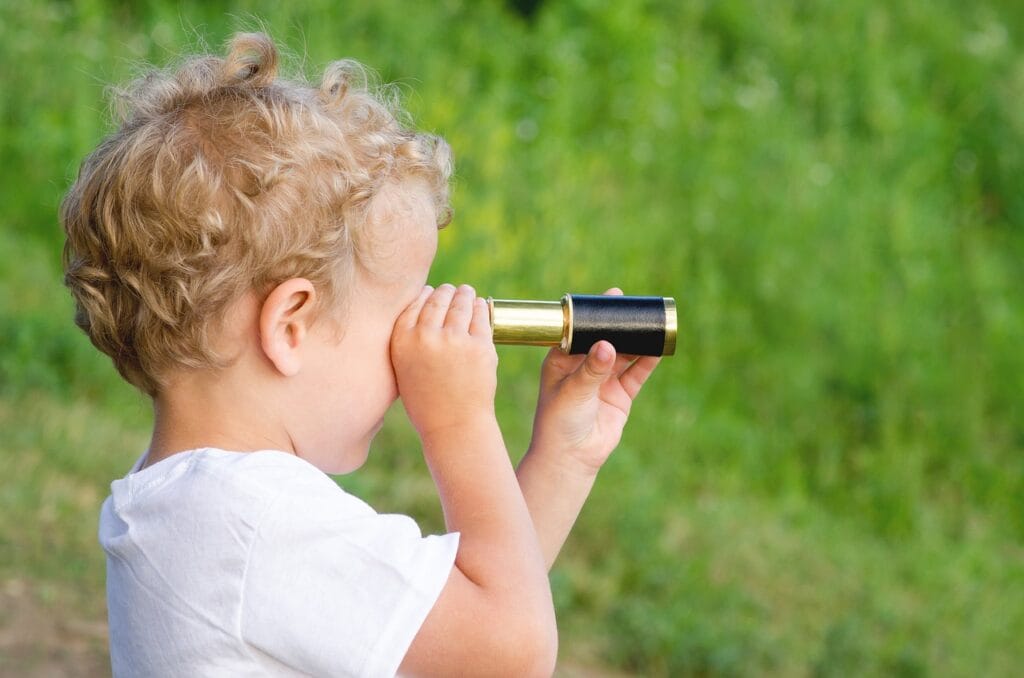Are you ready to embark on an astronomical adventure? With DIY telescope projects, you can explore the night sky from your own backyard. Building your own telescope is not only a rewarding experience but also an excellent way to delve into the fascinating world of astronomy. In this blog post, we’ll explore seven unique DIY telescope projects that cater to various skill levels, from simple designs for beginners to more advanced constructions for seasoned hobbyists.
Why DIY Telescope Projects?
DIY telescope projects offer a hands-on approach to understanding the science behind telescopes and the universe. These projects can be educational, providing insight into optics, physics, and engineering principles. Plus, building your own telescope allows for customization to suit your specific needs and interests. Whether you want to observe planets, stars, or deep-sky objects, creating your own telescope can enhance your stargazing experience.
Getting Started with DIY Telescope Projects
Before diving into specific projects, it’s essential to gather some basic tools and materials. Here are some items you might need:
- Optical Lenses: Depending on your design, you’ll need lenses with different focal lengths.
- Tube or Base: This could be a cardboard tube, PVC pipe, or a wooden base.
- Mounting Hardware: To secure your telescope and adjust its position.
- Additional Tools: Scissors, a drill, glue, and measuring tape.
Once you have your materials ready, you can choose a project that matches your skills and ambitions.
1. Simple Refractor Telescope
The simplest of all DIY telescope projects is the refractor telescope. This design uses lenses to bend light and bring it into focus.
Materials Needed
- Two optical lenses (one convex and one concave)
- A cardboard tube (such as a mailing tube)
- Duct tape or glue
- A small tripod or wooden base
Step-by-Step Instructions
Prepare the Tube:
- Cut the cardboard tube to your desired length, ideally around 30 to 36 inches. The longer the tube, the better the magnification.
Attach the Lenses:
- Secure the convex lens (the lens that bulges outward) at one end of the tube. This lens will gather light.
- On the opposite end, attach the concave lens (the lens that curves inward). This lens will help focus the light entering the tube.
- Use duct tape or glue to hold the lenses in place firmly.
Mount Your Telescope:
- Attach your tube to a tripod or create a stable wooden base using screws and glue. Ensure the telescope can be tilted up and down for easier viewing of celestial objects.
Benefits of This Project
This project is ideal for beginners and teaches the basics of optics. It’s a straightforward build, making it perfect for families or educational settings.
2. Newtonian Reflector Telescope
If you’re looking for a bit more challenge, consider building a Newtonian reflector telescope. This design utilizes mirrors to gather light and can provide excellent views of celestial objects.
Materials Needed
- A primary mirror (typically a parabolic mirror)
- A secondary mirror (flat mirror)
- A cardboard or wooden tube
- Mounting brackets
- A focuser (optional but recommended for easier viewing)
- A sturdy base or mount
Step-by-Step Instructions
Create the Tube:
- Cut the cardboard or wooden tube to the desired length (around 30 inches).
Install the Mirrors:
- Position the primary mirror at the bottom of the tube at a 45-degree angle. Secure it with mounting brackets or glue.
- Place the secondary mirror at the top of the tube, ensuring it’s angled to reflect light down into the eyepiece.
Install the Focuser:
- If you’re using a focuser, attach it near the top of the tube where the secondary mirror directs the light. This allows for smooth focusing when viewing objects.
Assemble the Mount:
- Build or purchase a sturdy mount that allows you to adjust the telescope’s angle for viewing. Make sure it’s stable to prevent vibrations.
Why Choose a Newtonian Design?
Newtonian telescopes are popular among amateur astronomers because they offer excellent light-gathering capabilities, making them suitable for deep-sky observation. They are also relatively easier to build compared to other types.
3. Solar Viewing Telescope
Safety is crucial when observing the sun, and a solar viewing telescope is a fantastic DIY project that allows you to do just that.
Materials Needed
- A solar filter (specifically designed for solar viewing)
- A sturdy tube (such as PVC or a cardboard mailing tube)
- A mount (tripod or a solid base)
- A finder scope (optional)
Step-by-Step Instructions
Select Your Tube:
- Choose a tube that is sturdy and long enough to provide a good viewing distance (about 24 inches or more).
Attach the Solar Filter:
- Securely attach the solar filter to one end of the tube. This filter is essential for safe solar viewing as it protects your eyes from harmful rays.
Install the Focuser (Optional):
- If you want to use an eyepiece, attach a focuser to the end of the tube opposite the solar filter. This will help you adjust the view for different objects.
Mount Your Telescope:
- Ensure that your mount is stable for safe solar viewing. You can use a tripod or build a solid wooden base to keep the telescope steady.
Enjoying the Sun
With this DIY telescope project, you can safely observe solar phenomena like sunspots and solar eclipses, making it a unique addition to your astronomical toolkit.
4. Smartphone Telescope Adapter
In today’s digital age, many amateur astronomers want to capture the wonders of the night sky using their smartphones. A smartphone telescope adapter is an innovative DIY project that merges technology with astronomy.
Materials Needed
- A smartphone holder or clamp
- A telescope or binoculars
- A mounting bracket (you can create one from cardboard or purchase a ready-made adapter)
Step-by-Step Instructions
Create a Holder:
- Build or find a holder that fits your smartphone securely. Ensure it has enough space to accommodate different smartphone sizes.
Attach to the Telescope:
- Connect the holder to your telescope’s eyepiece using the mounting bracket. This will align your smartphone’s camera with the telescope’s optical path.
Adjust for Viewing:
- Position your smartphone so that the camera lens is directly aligned with the eyepiece. Make sure it’s secure, and adjust as necessary for a clear view.
Test Your Setup:
- Point your telescope at a celestial object, and use your smartphone to capture images or record videos. Experiment with different settings for the best results.
Capturing the Night Sky
With this DIY telescope project, you can easily capture images of celestial objects, making your stargazing sessions even more memorable. It’s a great way to share your astronomical experiences on social media!
5. Motorized Telescope
For those who want to take their DIY telescope projects to the next level, consider building a motorized telescope. This advanced design allows for easier tracking of celestial objects.
Materials Needed
- A telescope tube (you can use a pre-made one or build your own)
- A motor with a controller (can be purchased from hobby electronics stores)
- A sturdy mount (tripod or custom mount)
- Power supply (batteries or power adapter)
Step-by-Step Instructions
Assemble the Telescope:
- Start with a traditional telescope design, either refractor or reflector.
Add the Motor:
- Install a motor on your mount that can adjust the telescope’s position. Ensure the motor is aligned with the axis of the telescope for smooth tracking.
Control System:
- Set up a simple control system, which could involve a handheld remote or an app, allowing you to control the motor for tracking objects smoothly.
Power Supply:
- Connect your motor to a power supply. Ensure that everything is properly insulated to avoid electrical hazards.
Testing:
- Test your motorized telescope during the night sky. Adjust the speed settings to ensure smooth tracking of celestial objects.
Why Go Motorized?
A motorized telescope enhances your viewing experience by allowing you to follow moving celestial objects without manually adjusting the scope. This is especially useful for astrophotography, where precise tracking is critical.
6. Binoculars to Telescope Conversion
If you have a pair of binoculars lying around, you can turn them into a makeshift telescope with some creative engineering.
Materials Needed
- Binoculars
- A tripod with a mounting platform (you can create one from wood)
- A small platform to attach the binoculars
Step-by-Step Instructions
Secure the Binoculars:
- Attach your binoculars to a stable tripod using a mounting platform. Ensure that the binoculars are firmly fixed to prevent any wobbling during use.
Adjust for Viewing:
- Position the binoculars so they are comfortable for viewing. You may need to adjust the height and angle of the tripod to get a better view of the night sky.
Fine-tune the Focus:
- Use the focusing knobs on the binoculars to get a clear image of celestial objects.
Experiment:
- Test your setup by observing different objects, like the moon or planets. Adjust the tripod and focus as necessary for optimal viewing.
Advantages of This Project
This project is cost-effective and provides a great introduction to the principles of telescopic viewing without needing extensive materials. It’s a fun way to get started with astronomy!
7. The Ultimate DIY Telescope
For the ambitious DIYer, creating a fully customized telescope from scratch can be a fulfilling project.
Materials Needed
- Various optical components (lenses and mirrors)
- Wood or metal for the frame
- Custom lenses and mirrors (you may need to purchase these)
- Mounting hardware
- Paint or finishing materials (optional)
Step-by-Step Instructions
Design Your Telescope:
- Plan out your design based on what you want to observe. Sketch your design on paper, including dimensions and materials.
Build the Frame:
- Construct a sturdy frame using wood or metal. Ensure it can support the weight of your optical components and maintain stability during use.
Assemble Optical Components:
- Carefully install and align all optical elements (lenses and mirrors) according to your design. Make sure everything is securely fastened.
Testing:
- After completing your telescope, test it on celestial objects. Adjust the focus and alignment as needed for optimal viewing.
Finishing Touches:
- Consider painting or finishing your telescope for aesthetic appeal and protection against the elements.
Crafting Your Ultimate Telescope
This DIY telescope project is an excellent opportunity to learn about advanced optics and construction techniques, allowing you to create a truly unique instrument tailored to your observing needs.
Conclusion
Engaging in DIY telescope projects not only nurtures your creativity but also deepens your understanding of the universe. By choosing any of the projects outlined in this blog post, you’ll embark on a journey of discovery that can enhance your stargazing experiences. Whether you’re building a simple refractor or a motorized telescope, the satisfaction of creating your own observing tool is unparalleled.
So gather your materials, invite friends and family, and dive into the exciting world of DIY telescope projects. The night sky is waiting for you!






